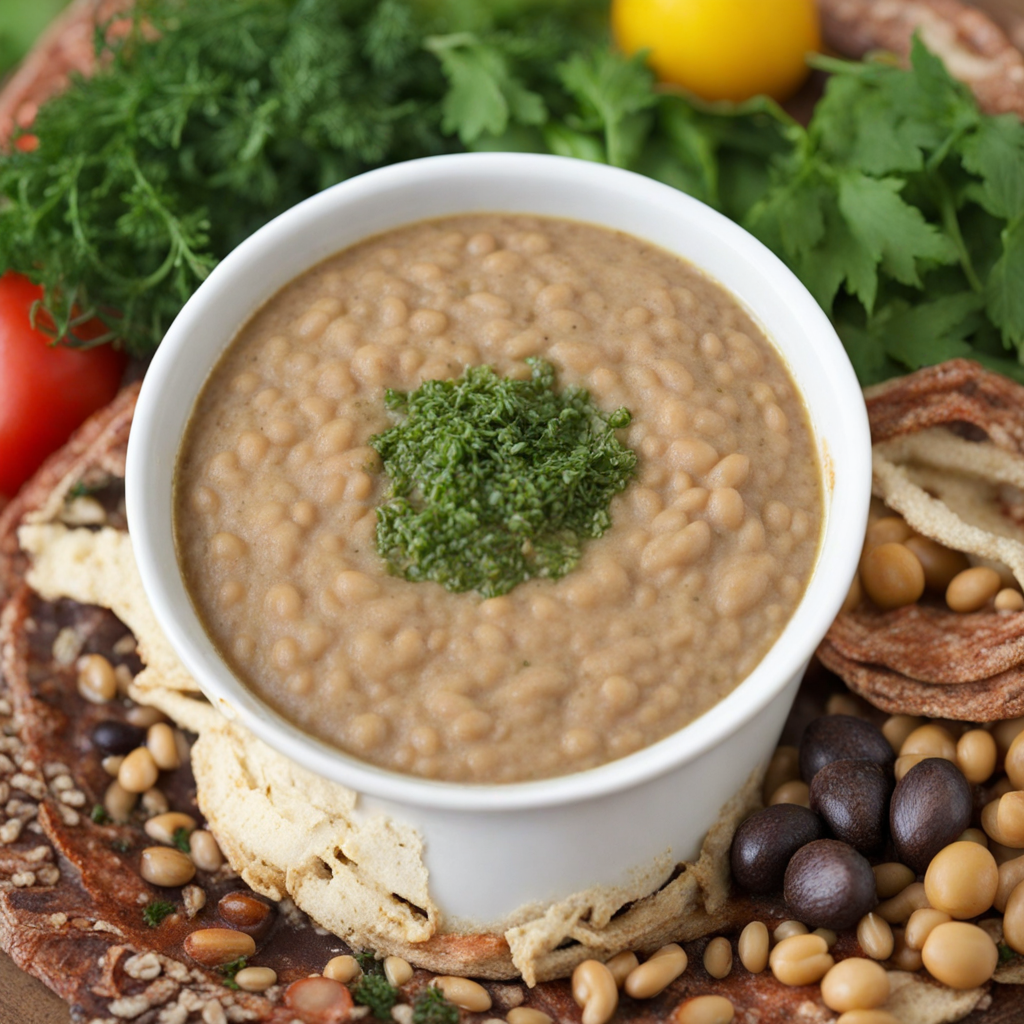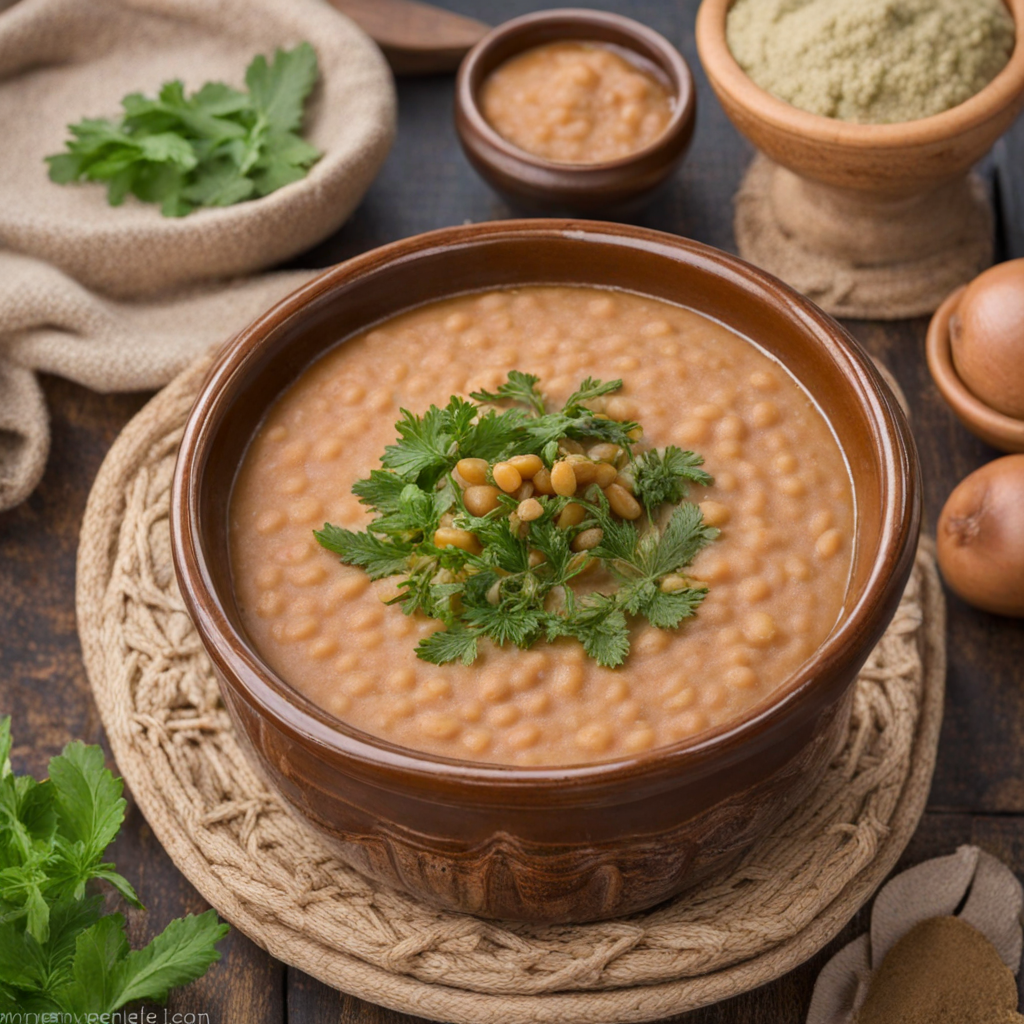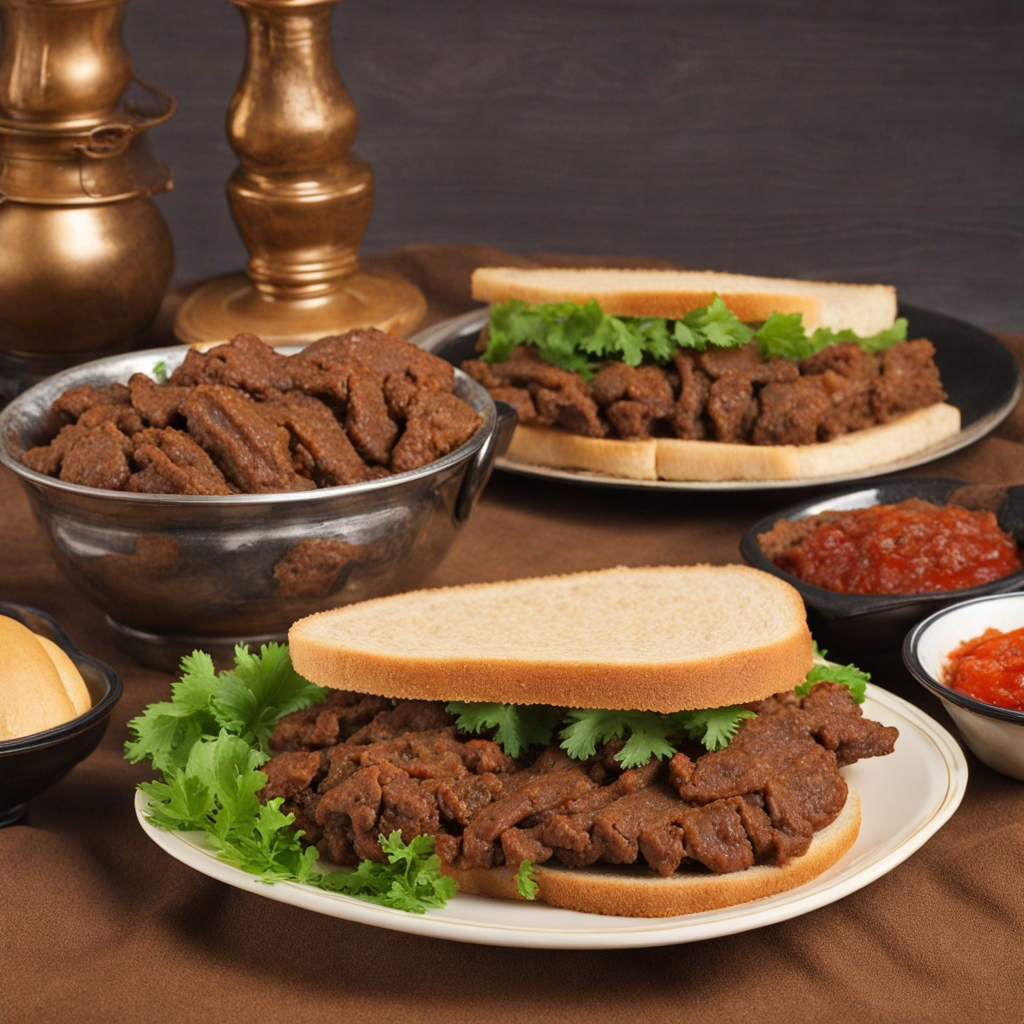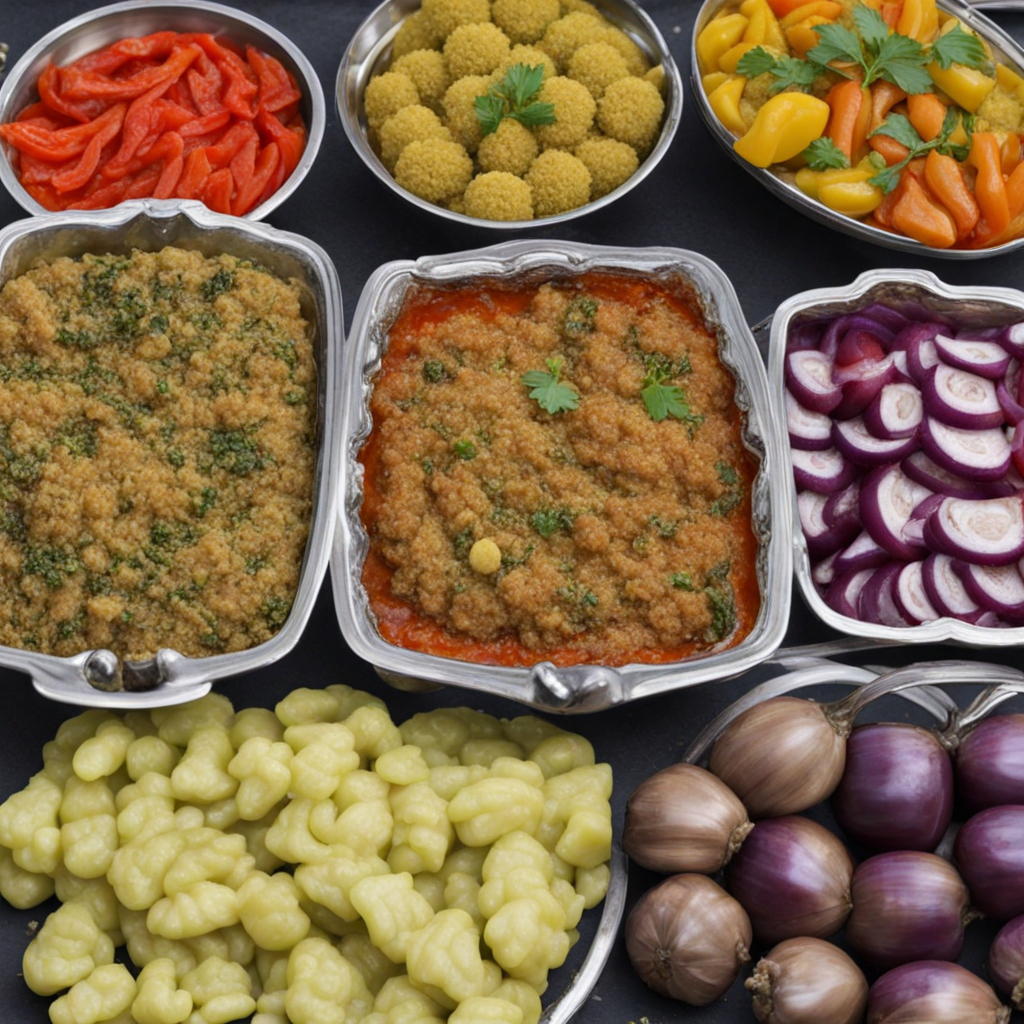Besara
Besara is a traditional Egyptian dish known for its vibrant flavors and wholesome ingredients. At its core, it is a fava bean soup that is often blended with a variety of fresh herbs, including parsley, cilantro, and dill, which infuse the dish with a refreshing and aromatic essence. The fava beans, which are the main ingredient, are typically soaked, cooked, and then mashed or blended to create a smooth, creamy texture that serves as the base of the soup. This dish is often seasoned with garlic, lemon juice, and spices such as cumin, which add depth and warmth to the overall flavor profile. The vibrant green color of Besara is not only visually appealing but also indicative of its healthful ingredients. The dish is usually enjoyed warm and can be served as a hearty soup or as a dip, accompanied by warm pita bread. It’s common for families to prepare Besara during special occasions or as a comforting meal during the cooler months. Its rich, earthy flavors combined with the tanginess of fresh herbs make every spoonful a delightful experience that celebrates the essence of Egyptian cuisine. Besara is more than just a dish; it is a cultural symbol that reflects the heart of Egyptian home cooking. Often found in local markets and traditional eateries, this dish brings people together, as it’s typically shared among family and friends. Its simplicity and wholesome character highlight the importance of communal dining in Egyptian culture. For those looking to explore new tastes, Besara offers a unique blend of flavors that showcases the beauty of vegetarian cuisine, making it a must-try for anyone eager to dive into the rich culinary traditions of Egypt.
How It Became This Dish
Bessara: The Soul of Egyptian Cuisine Bessara (بصارة) is a traditional Egyptian dish that embodies the rich culinary history and cultural significance of Egypt. This flavorful fava bean soup has been a staple in Egyptian households, especially among the working-class communities, for centuries. Its humble origins, nutritious value, and evolving preparation methods make it a fascinating subject in the landscape of Egyptian gastronomy. Origins The roots of Bessara can be traced back to ancient Egypt, where fava beans were cultivated as a primary source of protein. Archaeological evidence suggests that fava beans were consumed as far back as 4000 BCE, making them one of the earliest cultivated plants in the region. The ancient Egyptians revered these legumes not only for their nutritional benefits but also for their association with fertility and rebirth, linking them to the afterlife in their mythology. As Egypt transitioned through various dynasties and empires, including the Greco-Roman period and later Islamic conquests, the preparation and consumption of fava beans continued to evolve. The dish we know today as Bessara likely began to take shape during the medieval period, when the fusion of culinary practices from different cultures led to the development of new recipes that utilized local ingredients. Ingredients and Preparation Bessara is primarily made from dried fava beans, which are soaked and then boiled until tender. Once cooked, the beans are mashed into a smooth paste and combined with various ingredients such as garlic, cumin, coriander, and olive oil. Some recipes also call for the addition of fresh herbs like parsley or dill to enhance the flavor. The dish is traditionally seasoned with lemon juice, which adds a refreshing tang to the creamy texture of the soup. It is common to garnish Bessara with a drizzle of olive oil and a sprinkling of paprika or chili flakes, giving it an inviting appearance and an extra layer of flavor. While the basic recipe has remained consistent over time, regional variations have emerged across Egypt. In the Nile Delta, for instance, Bessara may be served thicker and richer, whereas in Upper Egypt, it might be lighter and more herbaceous. Street vendors and local eateries have their own unique takes on the dish, often serving it with fresh bread or as a side to grilled meats. Cultural Significance Bessara holds a special place in Egyptian culture, symbolizing sustenance, community, and resilience. Its affordability and nutritional value make it a go-to meal for families, particularly in times of economic hardship. The dish’s simplicity and versatility allow it to be a nourishing staple for all social classes, from humble homes to more affluent kitchens. In many Egyptian households, the preparation of Bessara is a communal activity, often involving family members who gather to cook and share stories. This gathering around food fosters a sense of togetherness and continuity, as recipes are passed down through generations. Bessara is more than just a meal; it reflects the essence of Egyptian hospitality and the importance of family bonds. Moreover, Bessara is often associated with religious and cultural observances. It is commonly consumed during the holy month of Ramadan, serving as a nutritious dish that helps break the fast after sunset. Its warming spices and hearty texture provide comfort and nourishment after a day of fasting, making it a beloved choice for iftar meals. Development Over Time As Egypt modernized throughout the 19th and 20th centuries, so too did its culinary landscape. The introduction of new cooking techniques and the influence of international cuisines began to alter traditional recipes, including Bessara. However, the core of the dish remained intact, as it adapted to contemporary tastes while still honoring its historical roots. In recent years, there has been a renewed interest in traditional Egyptian foods, including Bessara, as part of a broader movement towards local and sustainable eating. Chefs and home cooks alike have begun to explore the depths of Egyptian cuisine, highlighting the importance of traditional dishes and their significance to national identity. This revival has led to the reinterpretation of Bessara, incorporating modern culinary trends while staying true to its origins. The rise of health consciousness among consumers has also played a role in the resurgence of Bessara. With its high fiber content, plant-based protein, and numerous vitamins and minerals, Bessara is celebrated as a wholesome and nourishing choice in an increasingly health-oriented food culture. As vegetarian and vegan diets gain popularity, Bessara stands out as an ideal dish that caters to these preferences while remaining deeply rooted in Egyptian heritage. Furthermore, the globalization of food culture has allowed for the emergence of Egyptian cuisine on the international stage, with Bessara gradually gaining recognition outside of its homeland. Food enthusiasts and chefs from around the world are beginning to discover this traditional dish, often leading to innovative adaptations that draw inspiration from its flavors and textures. Conclusion Bessara is more than just a soup; it is a narrative woven into the fabric of Egyptian identity. Its history reflects the agricultural practices of ancient civilizations, the resilience of communities, and the ever-changing landscape of modern gastronomy. As Bessara continues to evolve, it remains a testament to the enduring significance of food as a cultural touchstone, bringing people together and nourishing both body and soul. In a world where culinary traditions often fade into obscurity, Bessara stands as a vibrant reminder of Egypt's rich heritage, inviting both locals and visitors alike to savor its warm, comforting flavors. Whether enjoyed in a bustling street market or a cozy family kitchen, Bessara will always hold a special place in the hearts of those who cherish the stories and flavors of Egypt.
You may like
Discover local flavors from Egypt







